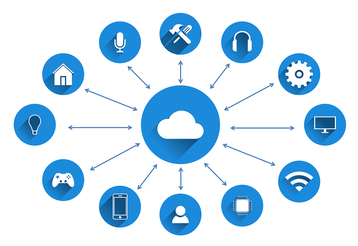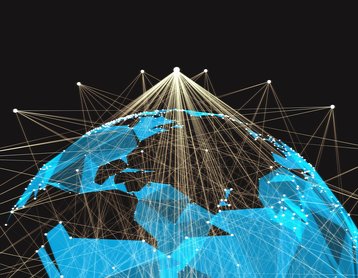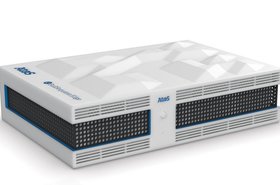The Internet of Things (IoT) is driving the evolution of today’s networked environments. To accommodate the proliferation of connected devices that produce huge volumes of data, centralized networks have morphed into networks of distributed, dynamically interconnected systems spanning clouds, microservices, and software-defined networks.
As a result, Edge data centers have become a critical component in supporting IoT and 5G data in geographically dispersed areas. Compute, storage, and network connectivity at the Edge guarantees that high-quality services are delivered with geographically distributed resources.
Since IoT is the biggest driver of Edge capacity, the demand for Edge data centers is expected to increase as IoT data increases. By 2022, the global Edge computing market is expected to reach $6.72 billion. As data moves to the Edge of networks, businesses must transform their data centers to meet the new demands. While centralized hubs, where the processing for primary applications occurs, will remain the core of the data center’s network, Edge data centers, which perform regional processing and caching, will become more prevalent with the growing demand for low-latency connections.
Benefits of moving to the Edge
From a customer’s perspective, value is determined by service quality, performance, and pricing. Since Edge computing moves workloads and applications closer to customers, it allows for the data produced by IoT devices to be processed closer to where it is created, instead of sending it across long routes to central data centers or clouds.
Large content delivery networks such as Google and Netflix have already adopted Edge centers. They cache their content and services at the network Edge through third party colocation data centers and specialized Edge data center service providers to reach customers in tier 2 and tier 3 markets and to deliver a user experience on par with that of a tier 1 market where the original content servers are located. The fact that tier 2 and tier 3 markets are far away from these servers no longer matters.
Moving data processing to the Edge of the network also improves response times. Since Edge data centers are physically closer to end users, performance speeds are faster in almost every situation. Keep in mind that while the performance quality increases – the associated costs should not. This is because Edge computing doesn’t deliver better services by laying newer cables. Instead, Edge computing is all about using a more efficient architecture for transferring and processing data in order to deliver content quickly to local users with minimal latency.
In addition to speed, Edge data centers offer more security, scalability, versatility, and uptime than traditional forms of network architecture. Since Edge computing distributes processing, storage, and applications across a wide range of devices and data centers, it is much more difficult for any single disruption, such as a DDoS attack, to take down the entire network. As more data is being processed on local devices rather than transmitting it back to a central data center, Edge computing also reduces the amount of data at risk at any one time. Data can also be rerouted through multiple pathways to ensure users retain access to the products and information they need.
The scalability and versatility of Edge computing go hand in hand. Edge data centers can partner with companies in desirable markets to offer new services without having to restructure their IT infrastructure. This presents new opportunities for companies to drive growth in a more cost-effective manner as adding new devices won’t impose too much on network bandwidth.
Managing Edge data centers
It’s important to keep in mind that Edge data centers are not like core data centers and cannot be managed as such. They present new challenges for data center operators for several reasons. First, they span multiple sites, all of which are connected and are remote and far from the core data center and its IT team. Site specific information must be shared, both locally with on-site personnel and centrally as part of an integrated network. Second, an Edge deployment requires more bandwidth, which further increases the complexity. Third, the Edge is becoming more intelligent. Legacy physical hardware, which exists back at the core data center, must be managed in conjunction with the new state-of-the-art equipment at Edge data centers. This will require a hybrid infrastructure management model for a while, as such a model is the only way to maintain both legacy equipment as well as the new intelligence at the Edge.
To ensure a successful Edge deployment, data center operators must upgrade operational infrastructure to accommodate modern requirements which includes implementing an infrastructure management tool. The ideal infrastructure management solution should provide complete visibility across all locations, all resources, and all connections, support connectivity to ensure standardized and harmonized network operations, and facilitate network planning to optimize capacity and resource utilization.
Overall, efficient data center operations are becoming increasingly dependent on Edge data centers. Edge data centers can help all types of businesses deliver services and products to an extended customer base with a standardized level of quality. While operating on the Edge drives success in a competitive environment, it’s important that infrastructure management teams and network operations managers have the proper tools to plan, manage, and document the network and communications infrastructure. Ideally, all within one central network and asset database. A centralized solution that can manage and optimize the entire data center infrastructure is the key to delivering better quality services and reliable network connectivity.
DCD will be exploring the edge and the rise of IoT in a special supplement coming soon. Be sure to subscribe for free.






